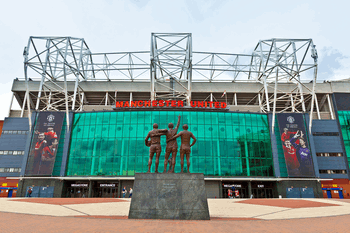
“There’s so much money in football” might well be one of the most used phrases in the sport. It is uttered so often by players, pundits and managers that it has become folklore and is rarely questioned.
But where does all this money come from? How does a football club get its share of this money? Is it shared out equally between all teams in the game?
We’ve already explored how a stadium makes money and it’s fair to say that there are numerous crossovers between the finances of a football ground and the club that plays in it. We’ll point the most obvious ones out here, but make sure you give our other article a read for a more in-depth look at the topic.
The list we offer here is far from exhaustive, especially as the biggest clubs in the world have ways of making money that involve complicated things such as image rights. We’ll do our best to give you a decent overview of the topic, however.
Television Money
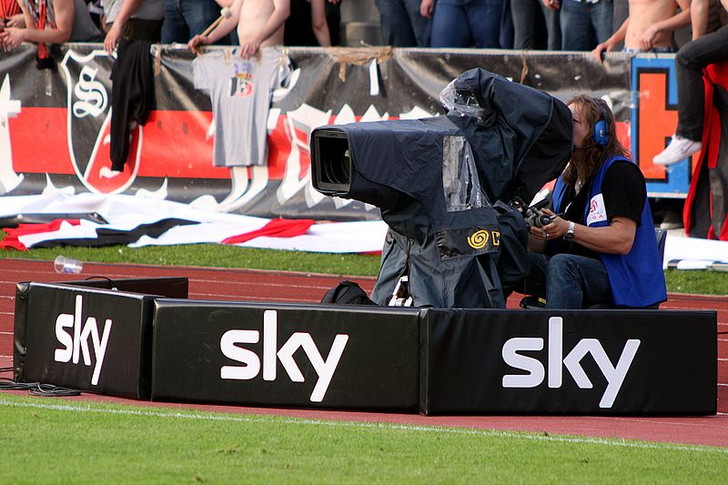
Football is the most popular sport in the world. The Americans might like to refer to the final of their inter-state baseball competition as the ‘World Series’, but when the US played Portugal in the World Cup in 2014 over 24 million people tuned in to watch. That puts the 15 million viewers of the previous year’s World Series final to shame and gives a real indication of how many people in America alone like ‘soccer’. Over 100 million American tune in to watch the Super Bowl every year, which is impressive. Yet around 700 million people around the world will watch Liverpool play Manchester United in a run-of-the-mill Premier League game.
Little wonder, then, that television rights are so hotly contested between the companies that can afford to bid for them. Of all of the leagues in the world, the English top-flight is the one most people want to watch and is therefore the one that brings in the most money. In 2015 the Premier League received over £5 billion in television rights, compared to the roughly £1 billion paid to La Liga. The TV money is shared equally between clubs, so the £5 billion plus paid by BT Sport and Sky to cover the league from 2015 – 2019 was worth £81 million per season to each club in the league.
It goes without saying that any sense of trickle down economics does not play out as you might wish it to in the English Football League pyramid. The 72 teams below the top-flight shared £195 million over three years from 2012 to 2015, which is one heck of a contrast to what the big boys get paid. There’s no question, therefore, that there’s something of a disparity between the teams at the top and everyone else. It’s why relegation can be such a painful experience for teams at the bottom of the Premier League, despite about £70 million in ‘parachute payments’ to help ease the pain.
If there’s already a disparity between the Premier League and the divisions below it in the footballing pyramid then there’s an even bigger gap between those in the Championship or below and those in the Champions League. The English top-flight’s TV money is shared out equally, but the Champions League money doesn’t have to be because it’s only applicable to those who play in Europe’s premier club competition. It’s why there is always such an intense battle to finish in the top four of the Premier League, with those missing out suffering the consequences.
As an example of what we’re talking about here, Manchester City earned over £76 million from their Champions League exploits in the 2015-2016 season. That’s a fair old whack of money all on its own, but what makes it even more noteworthy is that around £42 million of that was from their TV coverage. They reached the semi-final, of course, so there was a decent amount of screen time for them. Had they been knocked out earlier they’d have earned less, but you’re still talking in the region of £20 million plus from TV alone. So when people say TV revenue is the number one money earner for football clubs they’re really not telling porkies.
Prize Money
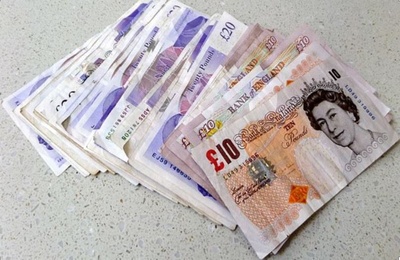 When all is said and done, football is a competitive industry. A club can finish just above the relegation zone and make a fair amount of money from TV coverage, but they’ll earn less than the teams above them. Why? Because for each place up in the league table you finish you earn more money. In the top-flight, for example, each position you finish higher up the table is worth £1.9 million to the football club. As the Premier League drew to a close in the 2016-2017 season, Watford could have finished anywhere between eighth and seventeenth depending on their result and the results around them. That would have been a difference of £17.1 million from the best position to the worst.
When all is said and done, football is a competitive industry. A club can finish just above the relegation zone and make a fair amount of money from TV coverage, but they’ll earn less than the teams above them. Why? Because for each place up in the league table you finish you earn more money. In the top-flight, for example, each position you finish higher up the table is worth £1.9 million to the football club. As the Premier League drew to a close in the 2016-2017 season, Watford could have finished anywhere between eighth and seventeenth depending on their result and the results around them. That would have been a difference of £17.1 million from the best position to the worst.
When Manchester United won the FA Cup in 2016, beating Crystal Palace in the final, they earned £1.8 million in prize money. The Eagles, meanwhile, ended up with half of that for finishing as runners-up. It’s why you’ll often here talk about a cup run being quite lucrative for a smaller side. As an example, Lincoln City was a non-league side in the 2016-2017 campaign and made it as far as the quarter-finals. That run earned them around half a million pounds, plus any money they made in gate receipts and television coverage. That is also why the smaller sides can sometimes be so desperate to get a replay against one of the bigger sides. Imagine how much of a difference the TV and gate money would make to a non-league side if they ended up playing Chelsea twice, say. It can keep them afloat for years.
As is the case with TV money, the prize money further down the league is less impressive than in the top-flight. That is the case for the sport around the world, of course, not just in England. It goes without saying that the team that finished 10th in the Bundesliga 2 wouldn’t have earned as much money as the tenth placed team from the German Bundesliga. Likewise a team in League Two in the UK doesn’t earn as much for their league finish as a Championship team. That’s where the competitive nature of the sport comes into play. Equally it is worth pointing out that a competition such as the League Cup isn’t as lucrative as its FA equivalent, with winners of that trophy earning about a tenth of the winners of the FA Cup.
Player Transfers
 This is one that is often overlooked, but the sale of a player can earn a football club a decent amount of money.
This is one that is often overlooked, but the sale of a player can earn a football club a decent amount of money.
Often that money is re-invested in other players so clubs don’t necessarily consider it as part of their income, but the less wealthy clubs can often be kept afloat thanks to a large amount of money made on the sale of a player. Liverpool isn’t one of the poorest clubs in the league, of course, but the £75 million sale of Luis Suarez to Barcelona certainly helped to swell their coffers in 2014.
One of the ways that smaller clubs can ensure a decent return on their investment is by adding a sell-on fee into the contract when the player moves to a bigger side.
Staying with Liverpool for a second, they sold Raheem Sterling to Manchester City in 2015 for around £49 million. Not a terrible amount for a talented but inconsistent young player. It was Queens Park Rangers who were the sly beneficiaries of the deal, though, having negotiated a 20% sell-on fee with Liverpool when the Reds bought him from the London club years before. That meant that the Merseysiders only actually got about £39 million for him, with QPR taking roughly £10 million of the price.
Match Day Revenue and Gate Receipts
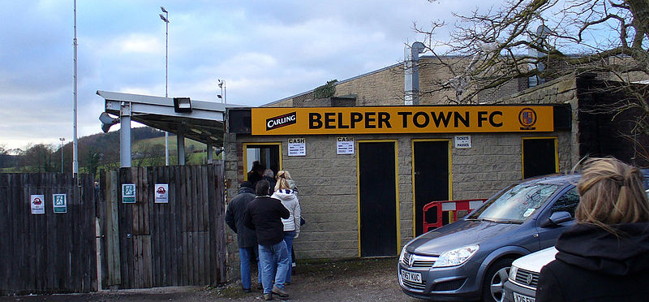
Before the Premier League reinvented football as a money spinning beast, the major revenue of football clubs came from a match day. This can be broken down into several different departments, with ticket sales being the most obvious one. Given that clubs are able to charge money to every single person that enters the stadium on the day of a game, it’s no surprise that those with bigger stadiums make the most money. Arsenal might not have enjoyed the success of Real Madrid and Barcelona in recent years, but they still make more than both of the Spanish giants on a match day. That is due to a combination of the Emirates Stadium having over 60,000 seats and Premier League clubs charging significantly more than their European counterparts for tickets.
Obviously the more successful a club is in various competitions the easier it will be for them to make money on the gate, with every single match being one that they can charge punters to watch. Progress in the FA Cup, League Cup and European competition, for example, and your ticket sales will increase accordingly. You’ll also earn money from that other major match day revenue generator – food and drink. Clubs are in charge of setting their own prices for the likes of pies, hot-dogs, beer, cups of tea and match day programmes. Clearly the sale of a player or a good cup run far outweighs the money earned by selling some pies, but every little bit helps.
There’s also the little matter of hospitality experiences on a match day. Business people are willing to spend large sums of money impressing clients and football clubs don’t mind taking that money off them. Executive lounges, boxes with a view of the pitch, even comfortable seats can all earn a club good money. This gets rolled into the match day revenue blanket, but it’s a whole other world compared to the normal fan who pays £50 or so for their ticket, so it’s worth mentioning separately.
Other Stadium Revenue Sources
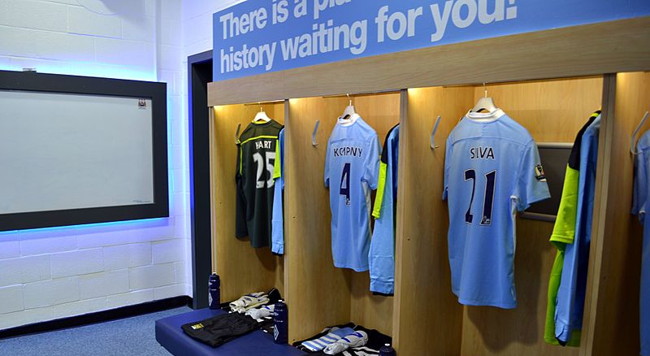
Imagine, for a second, that you bought a house that John Lennon used to live in. You’re alright for money, but someone knocks on your door one day and offers you £100 to have a look around the place. Who says no to £100 if they don’t have to? You let them look around, telling them which room Lennon used to sleep in and then send them on their merry way.
The next day there’s another knock and this time it’s a coach load of people offering £100 per head. Why would you say no to them? That is essentially the situation that a lot of football clubs can often find themselves in. Supporters want to have a look around the home of their heroes, so tours of the stadium that they play in can be a decent way to make money. Stick a museum on it and you’ve got another source of income.
And what of the time when there are no matches to be played? Perhaps it’s during an International break or the off-season. Maybe it’s just a weekday and no one will be using the facilities for a while. You’ve got plenty of hospitality suites and lounges going unused, so why not rent them out to local businesses that want to impress clients by hosting meetings in exciting surroundings? Maybe a really loyal fan wants to get married at the stadium and is willing to pay good money for the privilege. How about a rock band that is looking for a venue and can pay the club a solid amount of money in order to host their gig at the stadium?
These are just some of the reasons why a football club might be willing to rent out their stadium in exchange for money.
Conclusion
From play-on-the-pitch days through to image rights and the loaning out of stadiums for filming, there are countless ways in which a football team can earn money if they’re clever in what they’re doing. We’ve doubtless missed some obvious ones from our list, let alone the less obvious ones.
One of the biggest differences in football, though, is the way that teams at the top of the pyramid are able to make money compared to the way that teams at the bottom are. The homes of the Premier League’s Liverpool and Everton Football Clubs are about six miles from Prenton Park, the stadium of Tranmere Rovers. Yet can you imagine the non-league side being able to charge hundreds of thousands of pounds for the use of their ground? Can you imagine them asking supporters to shell out £70 plus for tickets?
Until such a time as the disparity between the clubs at the top and the clubs at the bottom is made less obvious, the richer clubs will only grow and grow whist the poorer ones will run the risk of disappearing completely.
